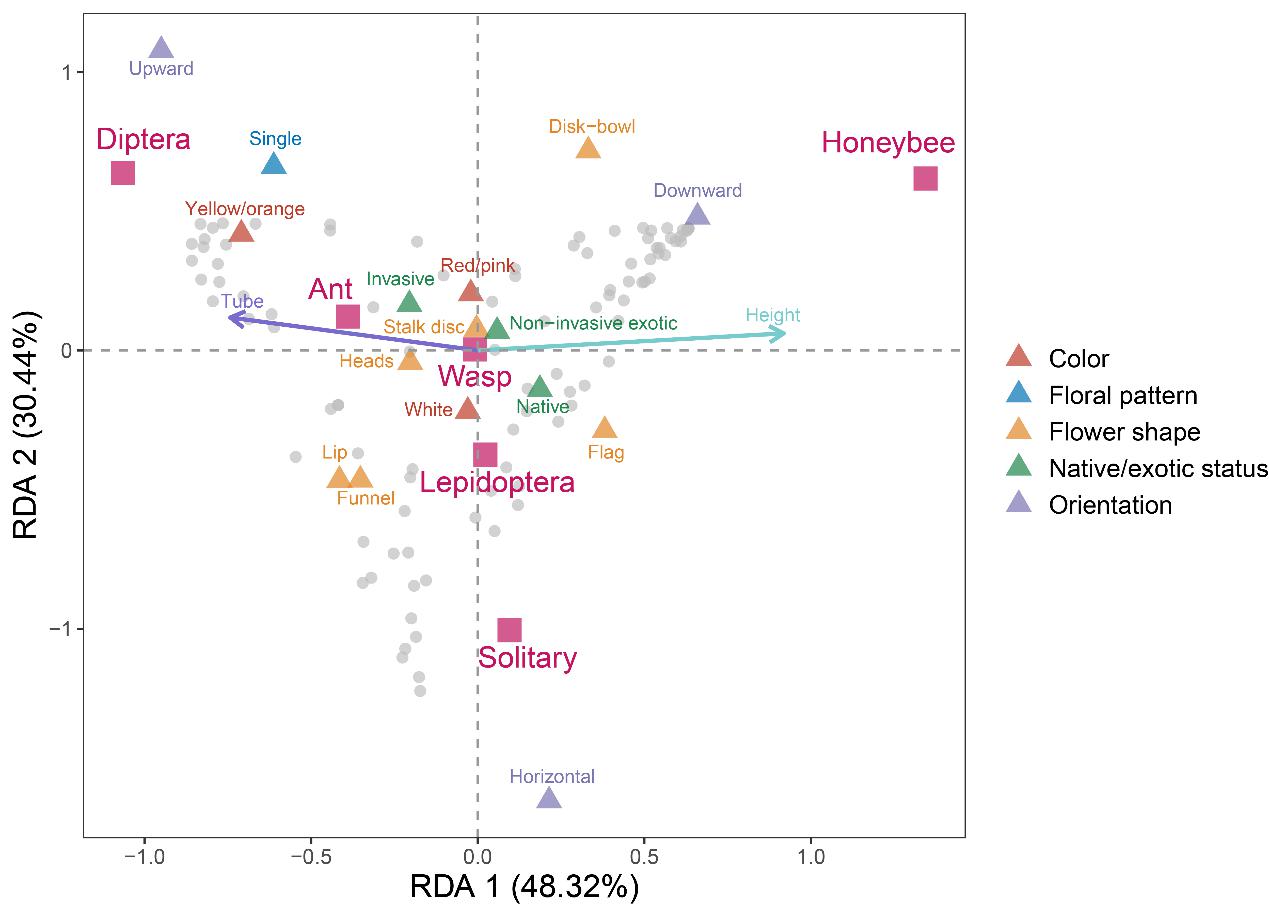Pollinators are in decline globally and regionally. Building pollinator-friendly urban green spaces is an effective way to mitigate the negative impacts of urbanization on pollinator diversity and services.
According to a study published in in Urban Forestry & Urban Greening, researchers from the Wuhan Botanical Garden of the Chinese Academy of Sciences and Huazhong Agricultural University have found that selective planting of attractive flowering plants can improve the conservation value of urban greenspaces.
Aithough some studies have proposed lists of pollinator-friendly plants for different countries and regions, the functional traits of flowering plants that influence pollinator preferences in urban green spaces require further investigation.
To find out, the researchers investigated various plant and flower traits, pollinator composition, and visitation frequency in a densely urbanized landscape in Wuhan, China, to examine the effects of green space area proportions and plant and floral traits on visitation frequency and to analyze the preferences of different pollinator groups for plant and flower traits.
The results showed that the flower shape, opening direction, and flower color significantly influenced pollinator preferences. Lepidoptera preferred funnel and head-shaped flowers; Diptera preferred upward-facing yellow and orange head-shaped inflorescences; bees favored biennial and perennial herbaceous plants with disc, bowl, and flag-shaped flowers; solitary bees showed a preference for horizontally opened labiate or flag-shaped flowers.
The study also suggested that native woody plants (such as Nandina domestica, Thymus quinquecostatus, Lagerstroemia indica, and Tamarix austromongolica) and some non-native plants (such as Centaurea cyanus, Borago officinalis, Portulaca grandiflora, and Echinacea purpurea) contributed to increasing urban pollinator diversity.
Due to the varying preferences of different pollinators, it is recommended to increase the flowering plants richness when designing pollinator-friendly gardens to promote overall pollinator diversity.
This work was supported by the National Natural Science Foundation of China.

Distribution map of research locations (Image by WANG Hui)

Flower preferences of different pollinator groups (Image by WANG Hui)






